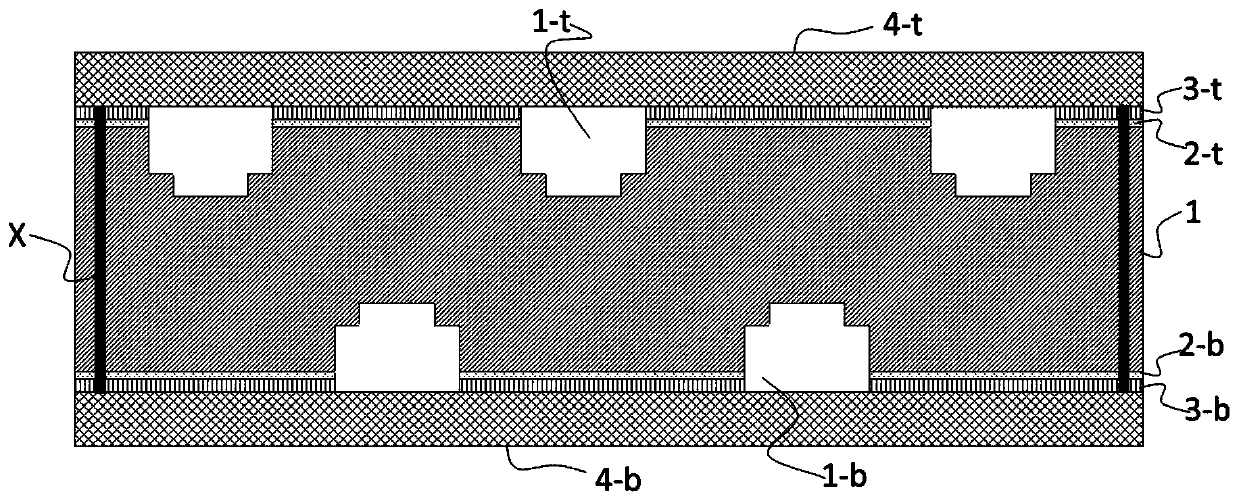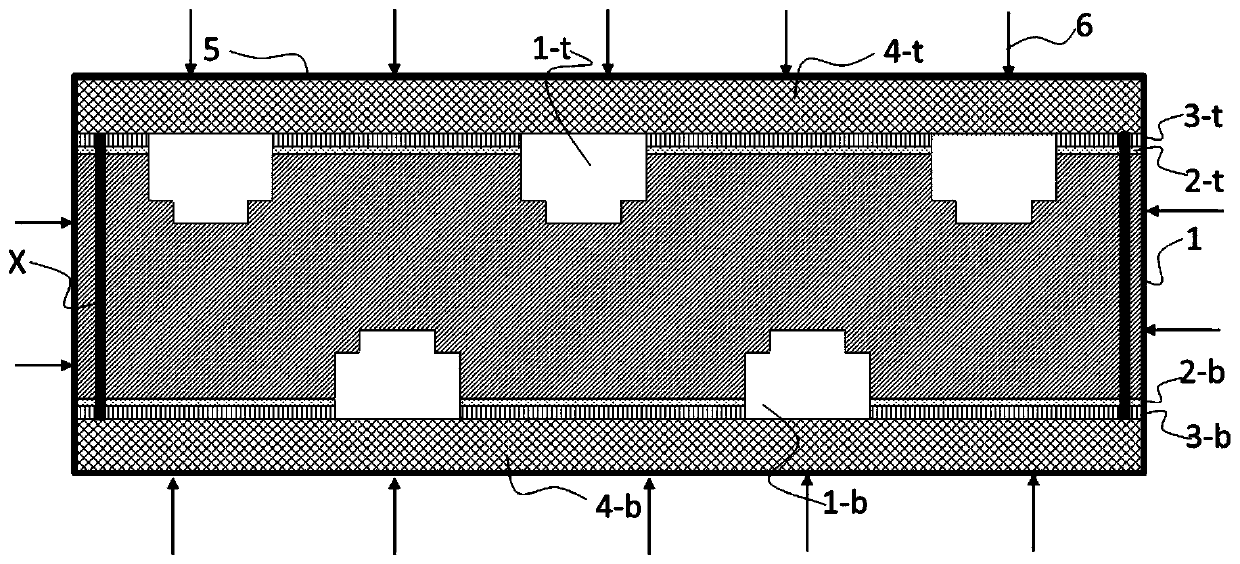Manufacturing method of LTCC substrate double-face cavity structure
A manufacturing method and a cavity technology, which are applied in semiconductor/solid-state device manufacturing, electric solid-state devices, semiconductor devices, etc., can solve problems such as decreased alignment accuracy between sub-module layers, local bending of substrates, and unfavorable substrate flatness, etc., to achieve The effect of good double-sided cavity quality, alignment accuracy between high layers, and good process stability
- Summary
- Abstract
- Description
- Claims
- Application Information
AI Technical Summary
Problems solved by technology
Method used
Image
Examples
Embodiment 1
[0030] The invention provides a method for manufacturing a double-sided cavity structure of an LTCC substrate, and the specific steps are as follows:
[0031] Step 1: If figure 1 As shown, the top rigid support piece 3t and the bottom rigid support piece 3b are made according to the cavity structure, the material is stainless steel, the thickness is 0.4mm, and the processing method is laser cutting.
[0032] Step 2: If figure 1 As shown, the top release film 2t and the bottom release film 2b are made according to the structure of the cavity. The material is PET film coated with silicone oil, the thickness is 0.1mm, and the processing method is laser cutting.
[0033] Step 3: If figure 1 As shown, the Ferro-A6M material system is selected, the through holes are made on the LTCC green ceramic sheet by the drilling and hole filling process, the conductor pattern is made by the screen printing process, and the cavity is made by laser processing or mechanical punching. After the...
PUM
| Property | Measurement | Unit |
|---|---|---|
| thickness | aaaaa | aaaaa |
| thickness | aaaaa | aaaaa |
| thickness | aaaaa | aaaaa |
Abstract
Description
Claims
Application Information
 Login to View More
Login to View More - R&D Engineer
- R&D Manager
- IP Professional
- Industry Leading Data Capabilities
- Powerful AI technology
- Patent DNA Extraction
Browse by: Latest US Patents, China's latest patents, Technical Efficacy Thesaurus, Application Domain, Technology Topic, Popular Technical Reports.
© 2024 PatSnap. All rights reserved.Legal|Privacy policy|Modern Slavery Act Transparency Statement|Sitemap|About US| Contact US: help@patsnap.com









